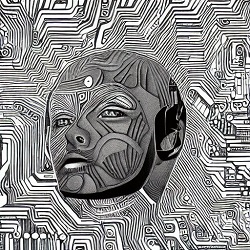
Surveillance, Security and Digital Warfare
The use of various technologies leads to monitoring people across affiliations (state, organisations, digital groups, etc.). Attacks on infrastructure, databases and other forms of IT disruption are executed digitally.
A (Optimist)
Ultra-secure databases for migration and automated monitoring systems
- Launch of end-to-end automated immigration processing systems lead to efficiency gains in international protection
- Invention of highly secure and standardised databases for exclusive use by migration organisations
- Enabled constant monitoring of health and wellbeing of asylum seekers improves living conditions of asylum seekers
- Ultra-secure databases for migration and automated monitoring systems provide tracking, information delivery, limiting overstays, and organised relocation
B (Pessimist)
Increasing digital surveillance, targeting and persecution
- Surveillance technologies (including use of social media and mobile telephones) are used by governments to target dissident individuals, increasing levels of persecution
- There is a rise of “the surveillance state” across several countries, which allows for an easier targeting and persecution of certain people/groups
- Resourceful governments increasingly target the IT systems of foreign asylum authorities to find out the identities of asylum seekers from their countries, forcing asylum systems to go increasingly offline and complicating their work
- Certain states manipulate the narrative on social media and turn society against each other, or against foreigners
C1 (Mediator)
Broad information sharing enables services, but expands digital attack surface
- Broad information exchanges between governments, agencies, and some private services enables improved services for asylum seekers, and caseworkers and managers
- Occasional database inconsistencies and algorithm biases cause false assessments
- Disruptive cyberattacks cause service outages, but these are limited in number and scope
C2 (Mediator)
Automated monitoring systems provide initial success, but ultimately fail
- The creation of automated monitoring systems (using identification databases, sensor systems (security cameras and drones, etc.) and algorithmic analysis are initially successful in helping track asylum seekers, verify identity and smooth asylum processes
- The large attack surface enables digital disruptions across multiple parts of this system - making it unreliable at best
- Numerous disruptions are both expensive and dangerous (for migrants), and the system is widely abandoned by asylum services, though its components remain in use (questionably)
D (Innovator)
Digital surveillance transparently regulated by international organisations
- Online surveillance is brought under the remit of an international organisation that allows for the use of firewalls that protect people by protecting their identities from being persecuted by governments for expressing their opinions online. Though people can still be persecuted if they express their opinions physically, which can be a cause of flight